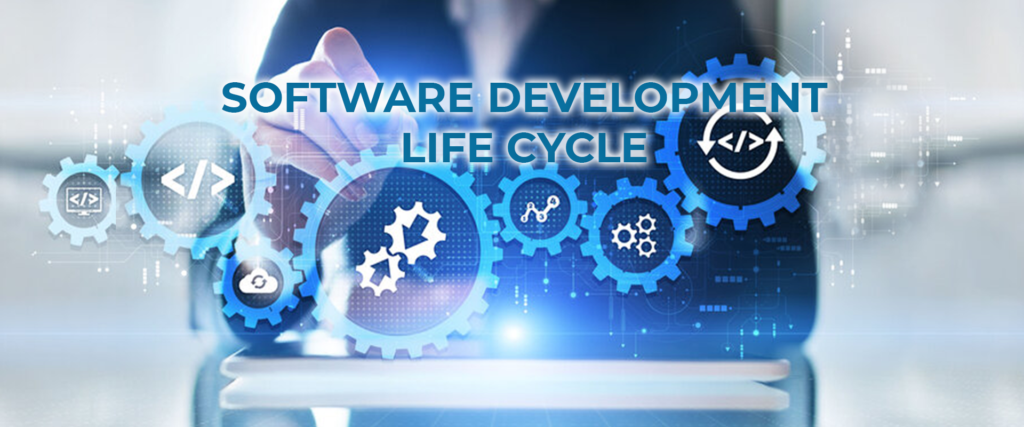Software development life cycle – Overview

The Software Development Life Cycle (SDLC) is a complex, interactive, iterative and evaluative set of processes that helps in ensuring that a usable and effective software product is developed.
The process of developing software can be arduous, so it’s important to understand the various points in the development lifecycle and how they tie together.
Each phase has its own specific goals, planning and time requirements. The goal at the beginning of each phase is to figure out what needs to be done and what is most important. In addition, we need to decide which tools will help us achieve our goals.Let’s get started.
The seven stages of SDLC :
The stages of SDLC for any company/project are the same. Depending on the methodology used, they might occur in the different chronologies.
For example, the waterfall model tends to have all the stages in a detailed and one by one manner such that no stage has to be repeated. While agile methodology focuses more on iteration thus repeating the stages whenever needed.
Let’s dive into the 7 core stages of the software development lifecycle.
1. Ideating & Planning
At the start after receiving a raw brief for software development, the team of IT professionals nurture and shape the core idea for the software. In the very first phase, very precious goal setting happens along with desired outcomes aligned to the use cases.
This is followed by laying off a detailed plan of action which encompasses a timeline created by taking into account the scope and resources for the software project.
2. Requirement analysis and resource allocation
After laying off a detailed plan, it is important to check the viability of the scope and requirements. This also gives insights into what kind of resources would be needed in a complete life to develop and deploy the software.
Once the requirements are validated and the need for resources is clear, the process moves on to allocating needed resources for the project as per the timeline. This involves assigning the team to the project manager and getting coding environments in place. At the end of this, the stage is set for developers and designers to start executing.
3. Design & Prototyping
In this phase, the software architects begin to design the UI for the software bringing it to life about how it will look to end-users. During this stage, the database structure is also designed.
All this is followed by making a prototype for the complete software which enables all the stack holders to experience the product and provide initial level feedback if any.
4. Development & Implementation
This is where the real programming and coding start. After having the complete design & receiving the feedback on the prototype, the developers then start coding and implementing it in the internal environment.
The goal for the developers is to write code efficiently while keeping the desired goals in mind.
5. QA & Testing
This is by far the most important phase in the complete SDLC. This is where the complete software is tested against every single-use case in the internal environment before publishing it for all the users.
A well-conducted testing phase prevents further glitches while the software is up and continuously used by a lot of users.
6. Deployment
After getting the ‘Go ahead’from the QA team, the software is now ready to be deployed for use. With modern methodologies like ARA (Applicate Release Automation) deployment is almost automated for continuous deployment of the software.
At the end of the deployment, the software is supposed to be completely running and accessible for the authorised users to start using it for their sake.
7. Maintenance & Upgrades
Remember how a Google search result used to look back in 1998? It is evolved quite a lot from back then. Every software needs a timely upgrade to be compatible with the latest technology, design, and use cases. Thus it is essential to release updates from time to time with major and minor improvements.
Here’s where a typical software development life cycle ends. If you are looking for a custom software solution partner to build a software product – feel free to get in touch with us. Do check out our software development methodologies as well.
